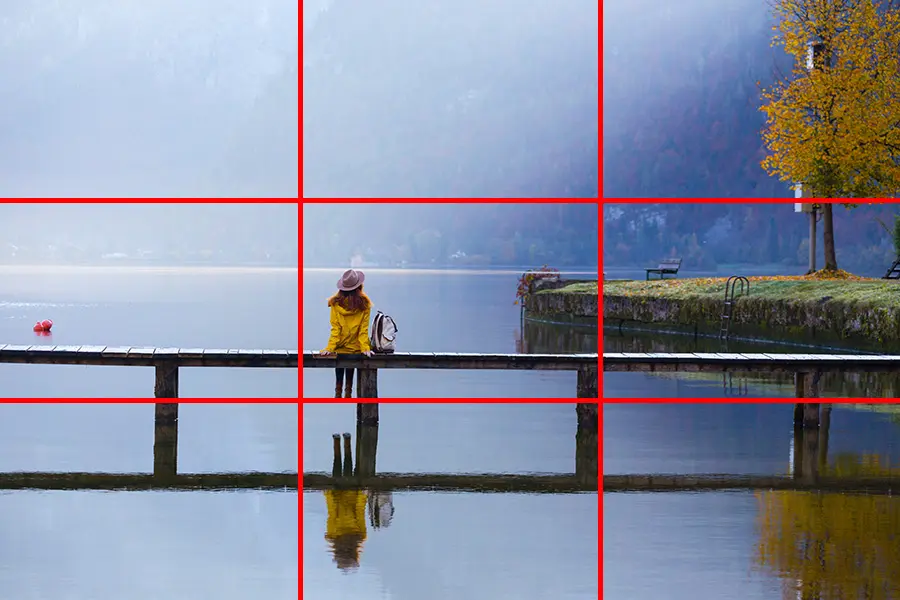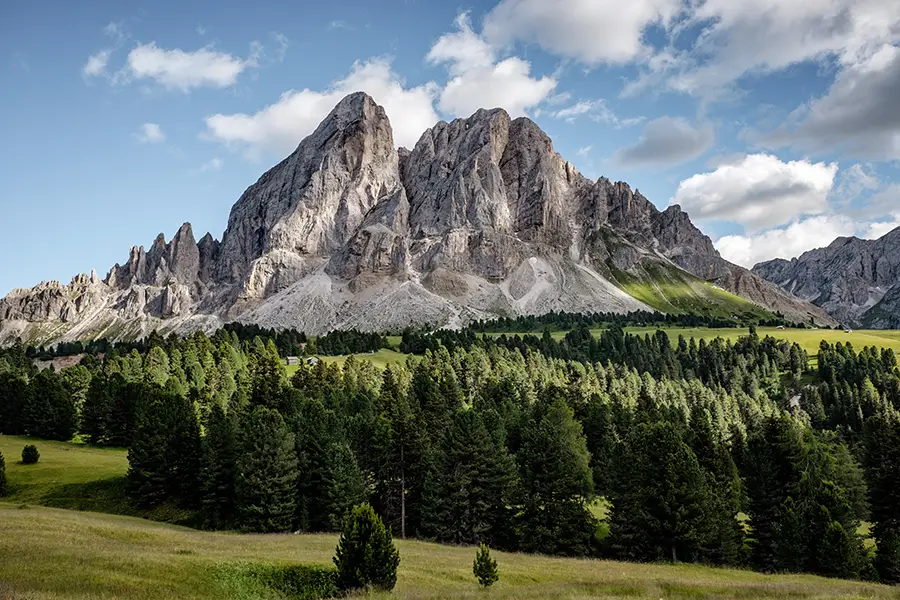Transform Your Photography with the Rule of Thirds
As a passionate photographer, I remember discovering the Rule of Thirds and how it completely transformed my photography. I was amazed by the power of this simple yet effective composition technique, and it quickly became an integral part of my creative process.
Utilizing the Rule of Thirds in photography is like following the rhythm of a song – it creates a natural and visually appealing flow that draws the viewer in.
Today, I would like to share my experience and knowledge with you, so you can also harness the power of the Rule of Thirds to create stunning, eye-catching images that capture the hearts and minds of your viewers.
- Transform Your Photography with the Rule of Thirds
- What is the Rule of Thirds?
- The Science Behind the Grid
- Why is the Rule of Thirds Important?
- Applying the Rule of Thirds in Your Images
- Breaking the Rules: When to Ditch Traditional Compositional Guidelines
- How to Master the Rule of Thirds
- Rule of Thirds in Post-Processing
- End Note
- FAQs
What is the Rule of Thirds?
Photography’s Rule of Thirds is essential for creating a harmonious and visually striking composition. This technique of dividing an image into nine equal parts with two horizontal and two vertical lines provides a dependable compositional guideline. This creates a grid that acts as a visual guide to place the subject or focal point of the image.
The key idea behind this rule is that placing your subject or focal point along these lines or at their intersections creates a more dynamic and interesting composition. This technique has its roots in the idea that the human eye naturally gravitates toward these points of interest, making the image more visually pleasing.


The Science Behind the Grid
The Rule of Thirds is rooted in the idea that the human eye is more drawn to the areas of an image where the lines intersect. This phenomenon is known as the “phi phenomenon” or the “golden ratio,” which has been used in art and design for centuries.
The Golden Ratio is ubiquitous in nature, architecture, and even the human face. Utilizing the Rule of Thirds in your photography, you leverage this innate preference for balance and harmony to create visually appealing images.
Why is the Rule of Thirds Important?
The Rule of Thirds is a vital composition technique in photography and other visual arts because it helps create more visually appealing, engaging, and balanced images. Here are several reasons why the Rule of Thirds is important:
Visual Appeal
Our eyes are naturally drawn to images that are well-balanced and harmonious. Using the Rule of Thirds, you tap into this innate preference, creating visually pleasing images that capture the viewer’s attention.
Dynamic Compositions
While centering your subject or focal point in an image can result in a static and unengaging composition, the Rule of Thirds encourages placing your subject off-center to create a more dynamic and intriguing composition. Doing so can make your images more captivating and memorable for viewers.

Guiding the Viewer’s Eye
The Rule of Thirds helps guide the viewer’s eye through your image by positioning the subject or focal point along the gridlines or at their intersections. This helps create a visual flow within the image, leading the viewer’s eye from one point of interest to another.
Sense of Depth and Balance
In landscape photography, the Rule of Thirds can create a sense of depth and balance by dividing the image into distinct sections, such as the foreground, middle ground, and background. Positioning the horizon line along one of the horizontal gridlines creates a balanced and harmonious composition that feels natural and inviting.
Enhancing Storytelling
To effectively convey a story or emotion in your photography, storytelling is essential. The Rule of Thirds can assist in building compositions that better express your desired message. By placing your subject or focal point within the gridlines, you can create a sense of tension, evoke various emotions, or add depth to your visual storytelling.
Building a Strong Foundation
Mastering the Rule of Thirds provides you with a solid foundation for understanding and applying other composition techniques. As you develop your photography skills, you’ll be better equipped to experiment with different compositions and create your unique style.
Ultimately, it is important because it helps you create visually appealing, engaging, and well-balanced images that effectively convey your intended message or story. Understanding and applying this powerful composition technique can elevate your photography and captivate your audience.



Applying the Rule of Thirds in Your Images
Now that we’ve explored the theory behind the Rule of Thirds let’s dive into how you can apply it in your photography. Regardless of the type of photography you prefer – landscape, portrait, or action – this technique can help you capture stunning images.
Landscape Photography
In landscape photography, the Rule of Thirds can create a sense of depth and balance. For instance, by placing the horizon line along one of the horizontal gridlines, you can achieve a harmonious balance between the sky and the land.
If your landscape includes a prominent subject, such as a tree or a building, try positioning it along one of the vertical gridlines or at an intersection point. This will draw the viewer’s eye to the subject and create a more dynamic composition.
Portrait Photography
The Rule of Thirds can help you create a more engaging and natural-looking image when capturing portraits. Position your subject’s eyes along one of the horizontal gridlines or at an intersection point. This placement will draw the viewer’s attention to the eyes, typically the face’s most expressive part.
Also, consider leaving some space in the direction your subject is looking or facing. This “negative space” will give the viewer a sense of where the subject’s gaze is directed, creating a more captivating portrait.
Action Photography
Applying the Rule of Thirds in action photography can make your images feel more dynamic and alive. When photographing moving subjects, position them along one of the vertical gridlines or at an intersection point. This will create a sense of motion and provide room for the subject to “move” into the frame.
It’s also essential to anticipate the movement of your subject and adjust your camera settings. This will ensure you capture sharp, well-composed images telling a story.
More to Love: Find Your Next Favorite Guide

Breaking the Rules: When to Ditch Traditional Compositional Guidelines
While the Rule of Thirds is a powerful composition technique, it’s important to remember that rules are meant to be broken. Staying from the Rule of Thirds can sometimes create a more compelling image. For instance, you might want to center your subject for a symmetrical composition or place it off to the side to create a sense of tension.
Experiment with different compositions and trust your instincts. The more you practice, the better you’ll recognize when to stick to the Rule of Thirds and break it for a more powerful image.

How to Master the Rule of Thirds
Mastering the Rule of Thirds is a skill that requires practice, patience, and understanding. Here are some expert tips for applying this compositional technique to your photography journey:
Train Your Eye
Developing an instinct for the Rule of Thirds, it takes time and practice. And as you shoot, visualize the grid overlay in your mind, mentally positioning your subject or focal point along the lines or intersections. Doing so will become more intuitive over time, allowing you to effortlessly compose images.
Start with Simple Subjects
When learning to apply the Rule of Thirds, begin with simple subjects and compositions. This will make it easier to focus on your subject’s placement and better understand how the technique works.
Experiment with Different Perspectives
Don’t be afraid to experiment with different camera angles and perspectives. This can lead to unique and interesting compositions that still adhere to the Rule of Thirds. For example, try shooting from a low angle or a high vantage point, and see how these different perspectives impact your composition.
Observe the World Around You
Observing the world around you is among the most effective methods to enhance your proficiency with the Rule of Thirds. Look for natural occurrences of the Rule of Thirds in everyday life, such as how objects are arranged on a shelf or how people position themselves in a group photo. This will help you develop an eye for balance and harmony in your own photography.

Study Famous Photographs and Artwork
Numerous renowned photographs and artworks follow the Rule of Thirds. Examining these images can offer valuable insights into how artists composed their shots and implemented this technique. As a result, your understanding of the Rule of Thirds will be enhanced, and you will be inspired to improve your photography.
Don’t Rely Solely on the Rule of Thirds
While the Rule of Thirds is a powerful composition tool, it’s not the only technique at your disposal. Learn about other composition techniques, such as leading lines, symmetry, and framing, and incorporate them into your photography. This will help you develop a more versatile and well-rounded skillset.
Reflect on Your Progress
To achieve growth and mastery, continuous learning and self-assessment are crucial. While honing your skills, it’s essential to pause and reflect on your progress. Reviewing your photos, recognizing areas that need improvement, and brainstorming ways to better utilize the Rule of Thirds during future shoots can all aid your development.
Following these expert tips and consistently practicing can help you master the Rule of Thirds. This can lead to the creation of stunning and visually appealing images that captivate your audience’s attention.


Rule of Thirds in Post-Processing
While it’s always best to compose your images using the Rule of Thirds during the shooting process, there are times when you might need to fine-tune your composition in post-processing. In these cases, you can still apply the Rule of Thirds to improve your photos’ overall balance and visual appeal.
Here’s how you can utilize the Rule of Thirds during post-processing:
Crop and Adjust
Most photo editings software, such as Adobe Lightroom, Photoshop, or even mobile editing apps, provide grid overlays that you can use to apply the Rule of Thirds. When cropping your images, you can enable the grid overlay and adjust the crop so that the subject or focal point aligns with the gridlines or intersection points.
Remember to balance the subject and the negative space in your image. This will ensure your final composition is visually pleasing and adheres to the Rule of Thirds.
Straighten Horizons
When working with landscape images, it’s crucial to ensure that the horizon line is straight and aligned with one of the horizontal gridlines. Using the Straighten or Rotate tool during post-processing can help you level the horizon in your landscape images. This creates a harmonious balance between the sky and land, resulting in a more visually appealing composition.
Add Visual Interest
If your image lacks visual interest, you can use the Rule of Thirds to add elements or adjust the existing ones during post-processing. For example, add text, graphics, or other visual elements that align with the gridlines or intersection points to enhance the overall composition.
Additionally, you can adjust the position, size, or orientation of existing elements in the image to create a better balance and adhere to the Rule of Thirds.
Analyze and Learn
Finally, take the time to analyze your images during post-processing and learn from your compositions. Studying your photos and understanding the Rule of Thirds enhances your skills and aids in future implementation.
Ultimately, the Rule of Thirds enhances your images’ composition and visual appeal in post-processing. With a comprehensive understanding of how to utilize this guideline effectively in both shooting and editing, you can produce more captivating and dynamic photos that engage your viewers.
End Note
Throughout this article, we’ve explored the ins and outs of the Rule of Thirds, delving into its significance, how to apply it in various photography genres, and expert tips for mastering this essential composition technique. As a fellow photographer, I can’t emphasize enough how valuable the Rule of Thirds is in elevating your photography and captivating your audience.
Remember that practice is key to mastering the Rule of Thirds. Keep experimenting, learning, and growing as a photographer. Embrace the journey, and soon, you’ll find that the Rule of Thirds becomes an intuitive part of your creative process, allowing you to create images that resonate with your viewers and leave a lasting impression.
So, grab your camera, head out into the world, and let the Rule of Thirds guide you in capturing the beauty surrounding us all. Happy shooting!
FAQs
The Rule of Thirds divides an image into nine equal parts with two horizontal and two vertical lines, serving as a compositional guideline. It helps create visually appealing and balanced images by placing the subject or focal point along these lines or at their intersections.
The Rule of Thirds is important in photography because it creates a sense of balance, harmony, and visual interest in your images. You can capture more compelling and eye-catching photos by leveraging the human eye’s innate preference for these qualities.
Yes! The Rule of Thirds is not limited to photography. It can also be applied to video and other visual mediums to create engaging and well-balanced compositions.
The Rule of Thirds is a guideline, and it’s essential to remember that rules are meant to be broken. Trust your instincts and break the Rule of Thirds when it feels right, or a different composition can result in a more compelling image.


